
How to Use 8x16 DOT Matrix: Examples, Pinouts, and Specs
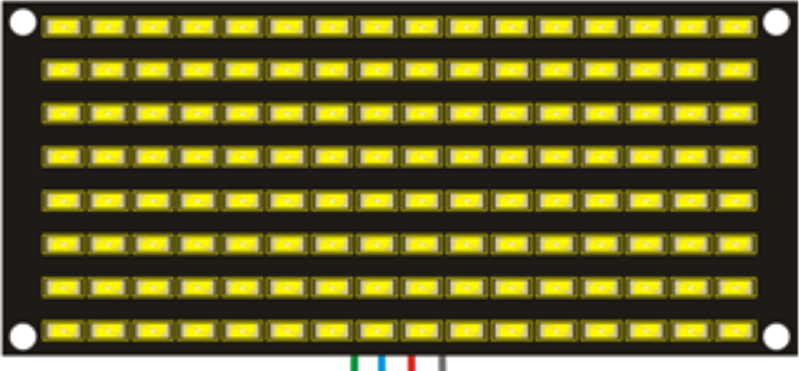
 Design with 8x16 DOT Matrix in Cirkit Designer
Design with 8x16 DOT Matrix in Cirkit DesignerIntroduction
The Keyestudio KS0357 is an 8x16 LED Matrix Panel that consists of 128 individually addressable LEDs arranged in 8 rows and 16 columns. This component is widely used in electronic displays, signage, and for creating images, animations, or text in a constrained space. It is a versatile display option for hobbyists and professionals alike, often used in conjunction with microcontrollers like the Arduino UNO for various interactive projects.
Explore Projects Built with 8x16 DOT Matrix
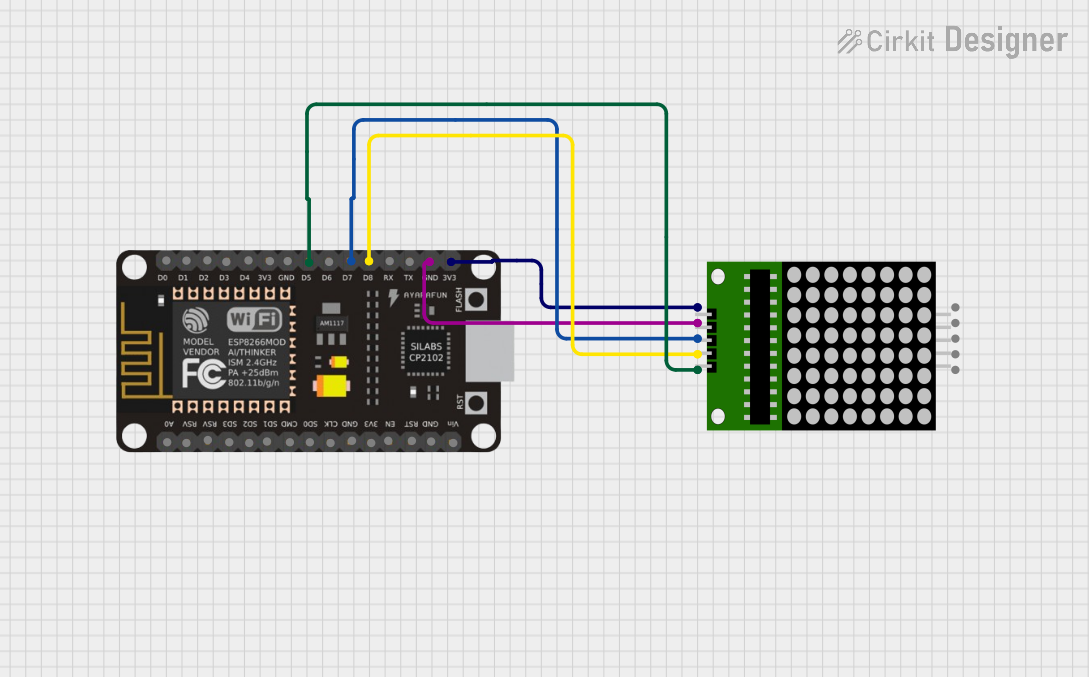
 Open Project in Cirkit Designer
Open Project in Cirkit Designer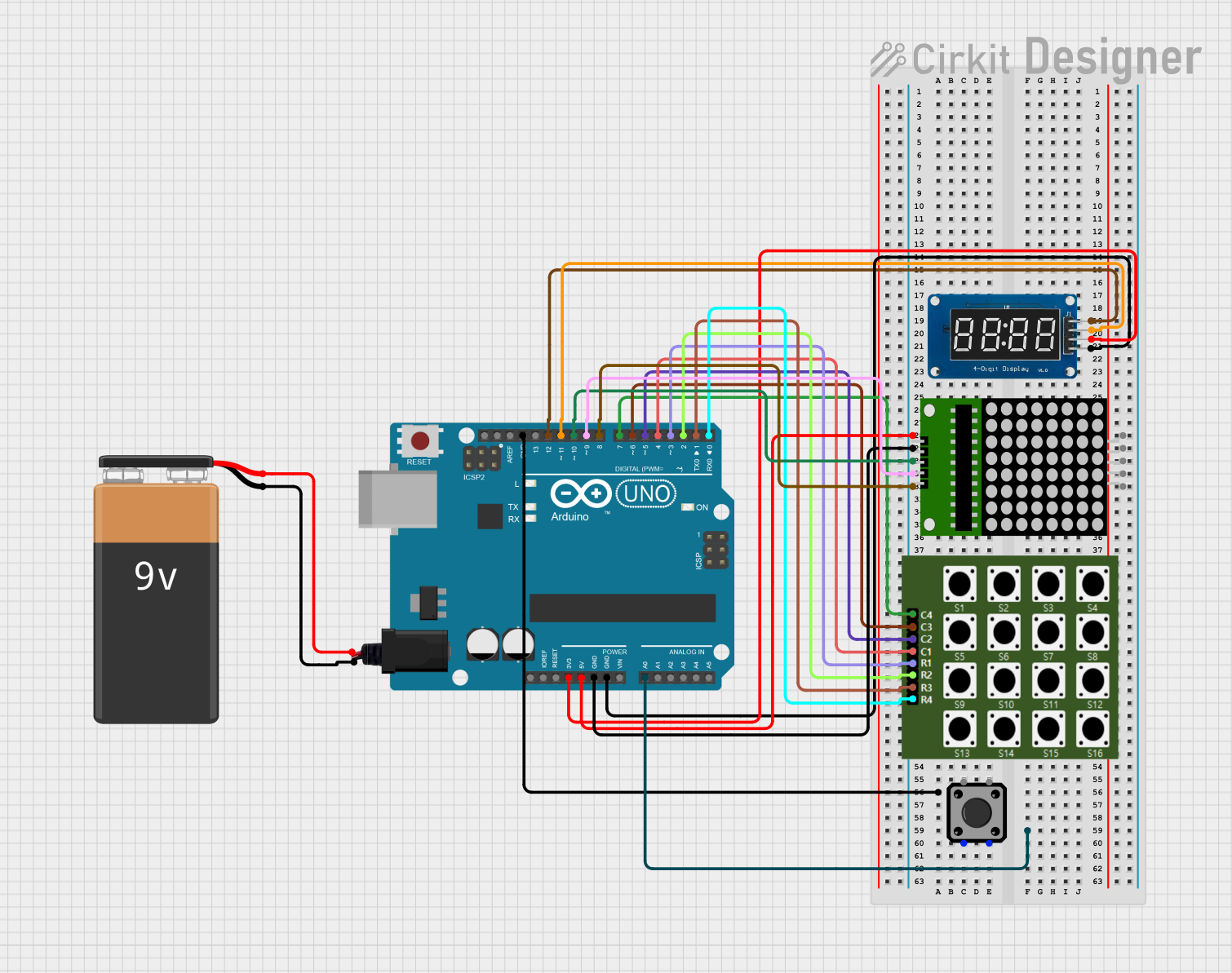
 Open Project in Cirkit Designer
Open Project in Cirkit Designer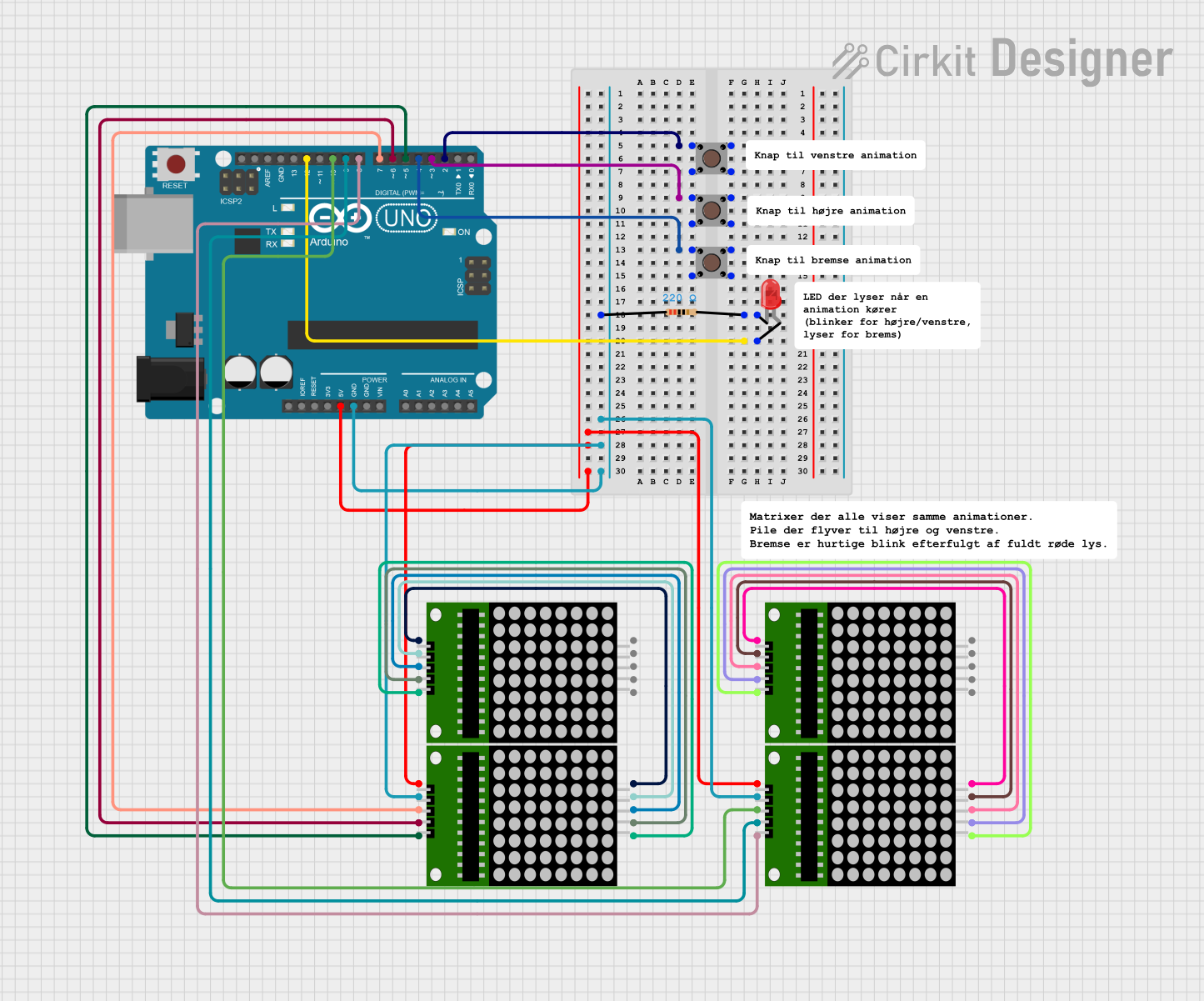
 Open Project in Cirkit Designer
Open Project in Cirkit Designer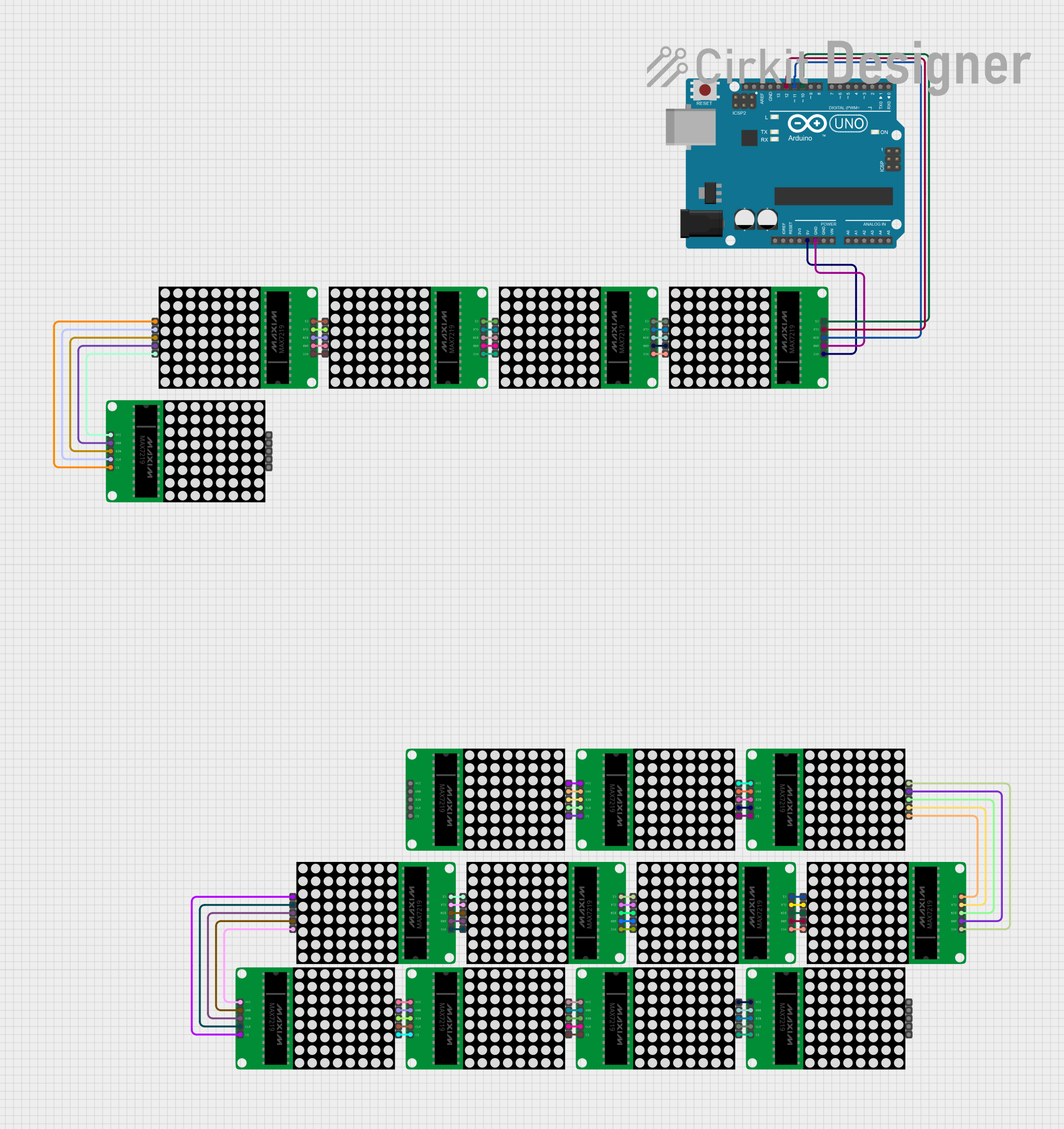
 Open Project in Cirkit Designer
Open Project in Cirkit DesignerExplore Projects Built with 8x16 DOT Matrix

 Open Project in Cirkit Designer
Open Project in Cirkit Designer
 Open Project in Cirkit Designer
Open Project in Cirkit Designer
 Open Project in Cirkit Designer
Open Project in Cirkit Designer
 Open Project in Cirkit Designer
Open Project in Cirkit DesignerTechnical Specifications
General Features
- Display: 8x16 LED Matrix
- LED Color: Red
- Operating Voltage: 5V DC
- Interface: I2C
- Dimensions: 64mm x 32mm x 9mm
Pin Configuration and Descriptions
| Pin Number | Name | Description |
|---|---|---|
| 1 | VCC | Power supply (5V) |
| 2 | GND | Ground |
| 3 | SDA | I2C Data Line |
| 4 | SCL | I2C Clock Line |
Usage Instructions
Connecting to an Arduino UNO
- Power Connections: Connect the VCC pin to the 5V output on the Arduino and the GND pin to one of the ground pins on the Arduino.
- Data Connections: Connect the SDA pin to A4 (SDA) and the SCL pin to A5 (SCL) on the Arduino UNO.
- Library Installation: Install the necessary libraries to interface with the LED matrix. This can typically be done through the Arduino IDE's Library Manager.
Programming the LED Matrix
To control the KS0357 8x16 LED Matrix Panel with an Arduino UNO, you will need to write a program using the Arduino IDE. Below is a simple example code that initializes the display and shows a scrolling text.
#include <Wire.h> // Include Wire library for I2C communication
#include <Adafruit_GFX.h> // Include core graphics library for the display
#include <Adafruit_LEDBackpack.h> // Include LED backpack library
Adafruit_8x16matrix matrix = Adafruit_8x16matrix(); // Create display object
void setup() {
matrix.begin(0x70); // Initialize the display with its I2C address
matrix.setBrightness(15); // Set brightness level (0 is dim, 15 is bright)
matrix.setTextSize(1); // Set text size
matrix.setTextColor(LED_ON); // Set text color
}
void loop() {
matrix.clear(); // Clear the display buffer
matrix.setCursor(0, 0); // Set cursor to top-left corner
matrix.print(F("Hello")); // Print text to display buffer
matrix.writeDisplay(); // Write buffer to display
delay(500); // Wait for half a second
matrix.scrollDisplayLeft(); // Scroll display to the left
delay(500); // Wait for half a second
}
Important Considerations and Best Practices
- Ensure that the power supply is stable and does not exceed the recommended voltage.
- When handling the LED matrix, avoid static discharge by grounding yourself.
- To prevent damage to the LEDs, avoid looking directly at them when they are illuminated.
- When writing text or drawing graphics, consider the limited resolution of the display.
Troubleshooting and FAQs
Common Issues
- Display Not Lighting Up: Check the power connections and ensure that the I2C address in the code matches the address of the LED matrix.
- Garbled or Incomplete Display: Verify that the connections between the Arduino and the LED matrix are secure and that the correct libraries are installed.
- Dim Display: Adjust the brightness setting in the code or check the power supply for adequate voltage.
FAQs
Q: Can I chain multiple KS0357 LED Matrix Panels together? A: Yes, multiple panels can be chained together. Ensure that each panel has a unique I2C address and that your power supply can handle the increased current draw.
Q: How do I change the I2C address of the panel? A: The I2C address can be changed by soldering the address jumpers on the back of the panel. Refer to the manufacturer's documentation for details.
Q: What is the maximum brightness level for the LEDs? A: The maximum brightness level is 15. However, running the LEDs at maximum brightness will increase power consumption and may require additional cooling.
For further assistance, consult the Keyestudio community forums or contact technical support.